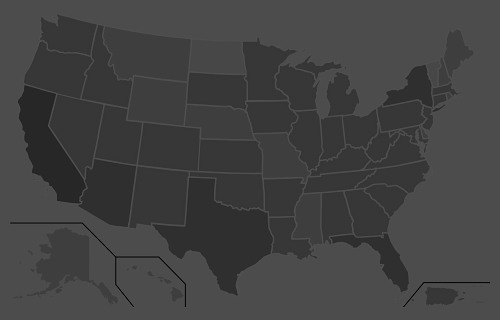“Our added winter moisture and active calling period led to a very long nesting and hatching season, starting in late April and extending into early summer, with chicks hatching as late as early July,” O’Dell said. “From a population standpoint, we are out of a deficit for the first time since 2001-2002. Quail are starting to pop up in places they haven’t been seen in a while.
“If you’ve never had the chance to experience what Arizona quail hunting built its name on, then this would be the year to get out and enjoy it.”
Meanwhile, hunters should note that the season for Mearns’ quail doesn’t begin until Dec. 4. It’s summer rainfall that plays a key role in nesting success and population numbers of this species. After a spotty and relatively weak monsoon across southern Arizona, these birds are likely to be abundant only in pockets that received sufficient precipitation this summer.
A valid Arizona hunting or combination hunt and fish license is required for all hunters 10 and older. Those hunters under 10 must either have a valid hunting or combination hunt and fish license, or be accompanied by an adult who possesses a valid hunting or combination hunt and fish license. Licenses can be purchased online or at license dealers statewide. A youth combination hunt and fish license (ages 10 to 17) is $5.
The general bag limit is 15 quail per day in the aggregate, of which no more than eight may be Mearns’ quail (when the Mearns’ season opens Dec. 4). The general possession limit is 45 quail in the aggregate after opening day, of which no more than 15 Gambel’s, scaled or California quail in the aggregate may be taken in any one day. After the opening of the Mearns’ season, the 45-quail possession limit may include 24 Mearns’ quail, of which no more than eight may be taken in any one day.
More quail-hunting information can be found on the department’s website at https://www.azgfd.com/Hunting/. Another resource for both new and experienced hunters alike is “An Introduction to Hunting Arizona’s Small Game.” Written by Randall D. Babb, the 196-page, full-color book covers where and how to hunt small game birds (like quail), squirrels, rabbits, ducks and geese. It also includes how to prepare and cook your harvest, with illustrations and recipes. The book can be ordered for $16.95 at www.azgfd.gov/publications.
Finally, hunters should check out O’Dell’s techniques for field-dressing quail at https://www.youtube.com/watch?v=3gRwZAcWzzk.
####
Publishers Notes: OUT OF STATE HUNTERS, FISHERMEN & OUTDOOR ENTHUSIASTS; Due to the Covid 19 pandemic, there could be limitations for OUT of STATE hunters, fishermen and other outdoor enthusiasts to include a 14-day quarantine requirement or negative COVID-19 testing alternative. Please check with the State's Department of Natural Resources BEFORE you travel or apply for the 2020 Fall Hunts.
Disclaimer: The views expressed on this site are that of the authors and not necessarily that of TBC Press
New Report Shows Hunting Accidents in Texas are at a Record Low
Submitted by: TBC Press
Posted on: 02/25/22
The Backcountry Press
The country's premier daily HUNTING, FISHING & OUTDOOR news in the USA and around the globe. Read whats happening in your neck of the woods & beyond.
© 2020 TBC Press - All Rights Reserved Website Design by:
News # 14718
Hunting-related accidents in Texas are at an all-time low since Hunter Education became mandatory in 1988, according to the 2021 Texas Hunting Accident Report released by the Texas Parks and Wildlife Department (TPWD).
Of more than 49,000 certifications in 2021, Texas experienced only one fatality and 11 accidents statewide, according to the report.
“In 2021, three quarters of the incidents were what we call ‘swinging on game outside of a safe zone of fire,’” said Steve Hall, the Hunter Education Coordinator for TPWD. “This is the most common mishap in Texas besides careless handling in and around vehicles. The cardinal rule of hunting and shooting safety is keeping the muzzle of a firearm always pointed in a safe direction.”
This marks a significant decrease since 1988, when more than 18,000 Texans received their Hunter Education certification but reported 12 fatalities and 70 accidents throughout the state. As more Texans have taken to the field and obtained their Hunter Education certification, these numbers have greatly improved. Even prior to Hunter Education becoming mandatory in 1988, TPWD has offered hunter education courses since 1972, certifying nearly 1.5 million students. Today, Hunter Education is required for every hunter in Texas (including out-of-state hunters) born on or after Sept. 2, 1971. The minimum age for certification is nine years of age and certification is good for life.
There are two course options for anyone who needs to take Hunter Education. The basic classroom course includes six hours of instruction plus skill exercises, a review and then a final exam. These types of courses are most often held in schools or in an indoor venue. The online course, combined with a field course, has two parts: a free online course that should be completed first, and then the field portion that typically takes a minimum of four hours to complete. The field course contains a presentation on ethical and responsible hunting, participation in a hunting skills trail, a live-fire exercise, a review of regulations and a final exam.
There is also an online-only course that is restricted to anyone 17 years of age or older. Online coursework varies from two to four hours depending on pre-knowledge, age, reading level and other factors.
Hall offers other tips that will help ensure a safe experience for hunters whether they’re at their home, in transit to their hunting spot or spending time in the field.
- Unload all firearms when not in use, especially in the home, in transport and in the field until ready to shoot.
- Keep your fingers outside of the trigger guard until ready to take a shot.
- Waterfowl hunters should wear protective clothing, waders and approved life jackets while in boats or around water, especially in winter months. Drowning ranks as the number one hunting incident for these hunters.
- For dove, quail and pheasant hunters, the number one incident is swinging on game outside a safe zone of fire. Communicate and stick to your safe zone of fire and never shoot towards another hunter, buildings or structures, or domestic animals such as cows.
- Be sure of your target- what is in front of and behind the target.
- Wear blaze orange to be seen by other hunters.
Hunters must have proof of Hunter Education certification on their person while in the field. Hunters have access to their Texas proof of Hunter Education in the free Outdoor Annual mobile app for iOS and Android.
Learn more about Hunter Education, how to sign up for a course and find resources for students on the TPWD website.
####












